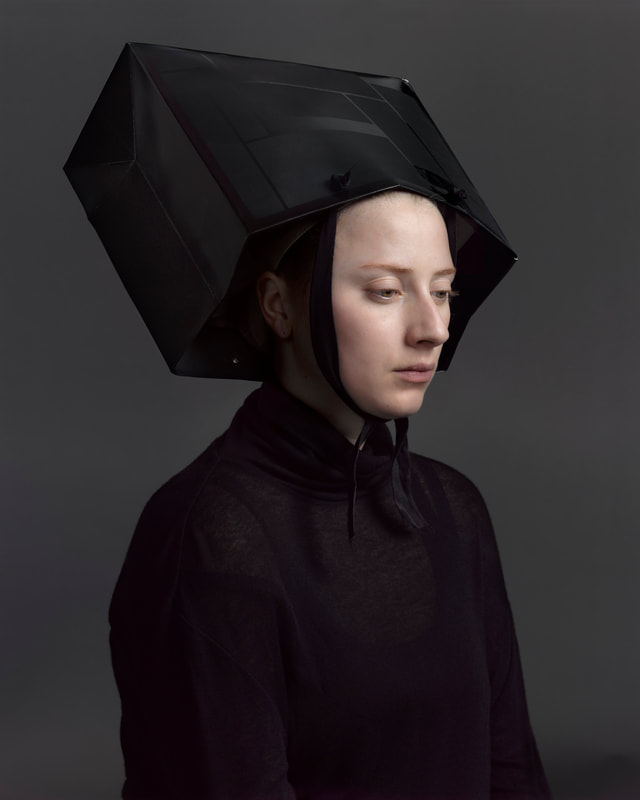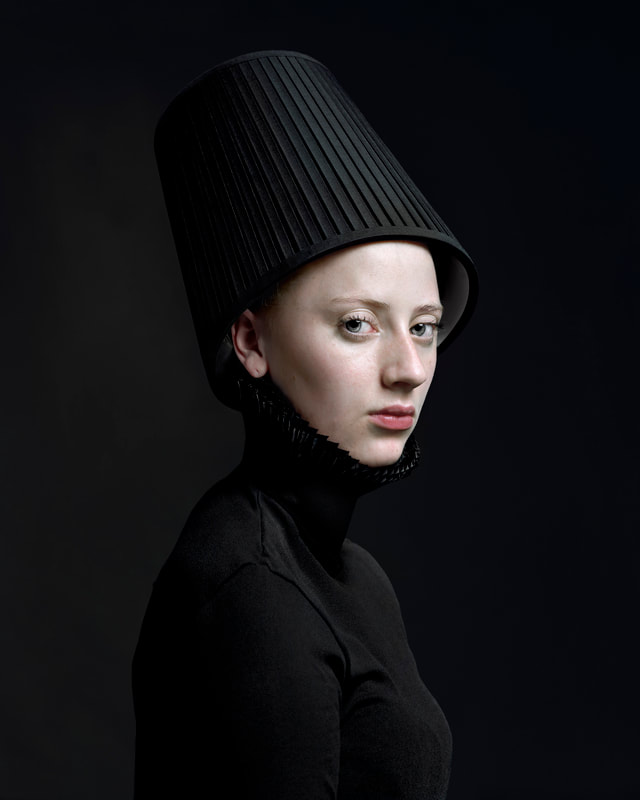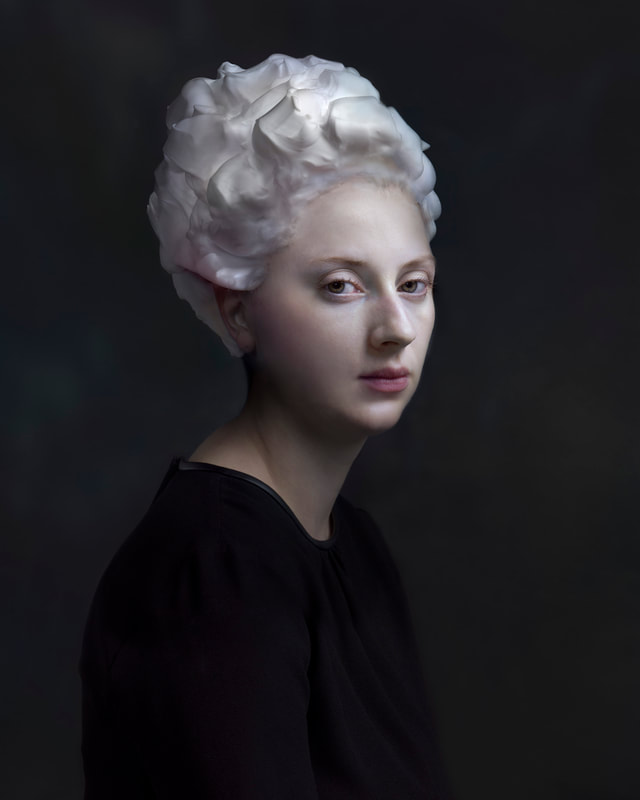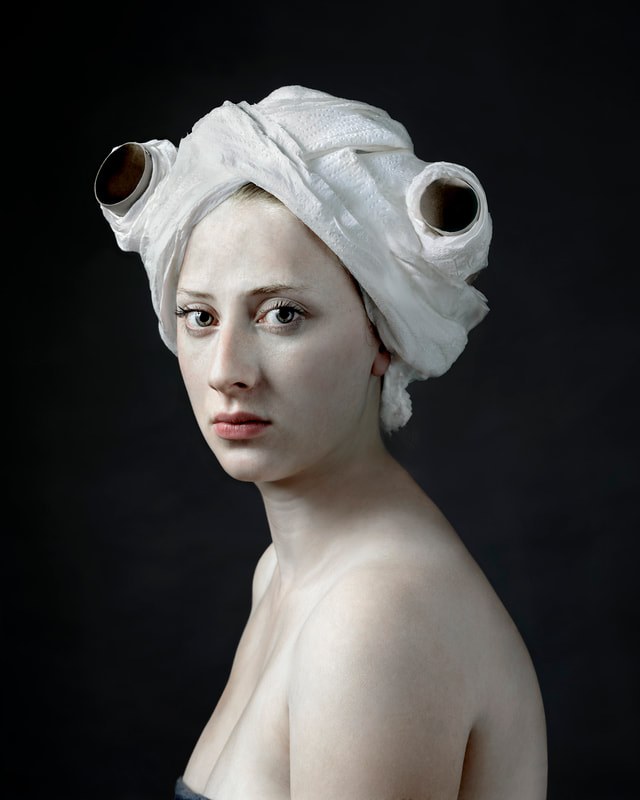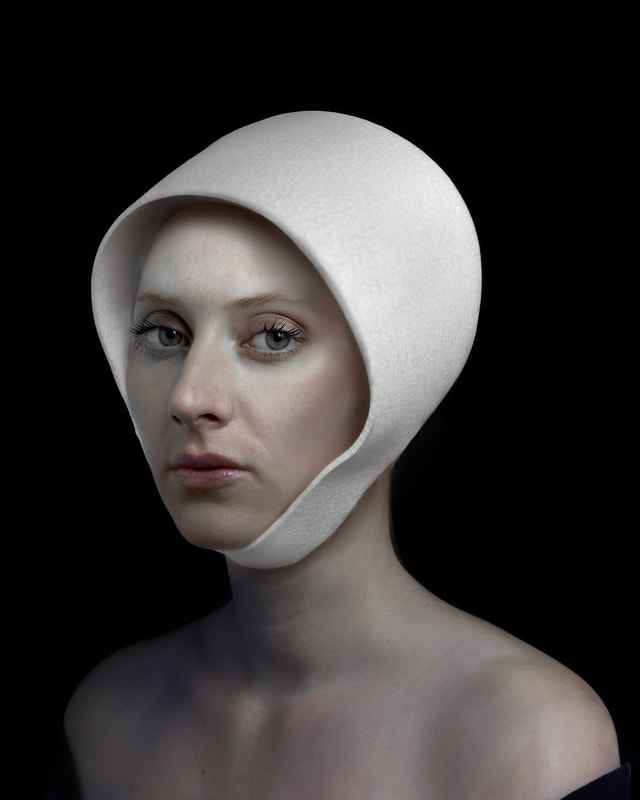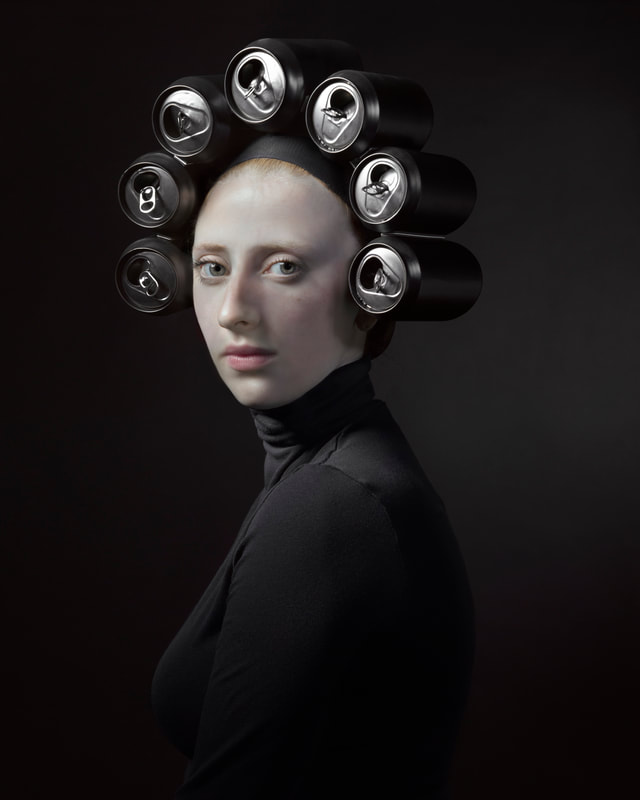|
THE DUTCH PHOTOGRAPHER HENDRIK KERSTENS, AND HIS GOLDEN RATIO
CARMEN HUST | ARTICULATE #18 | JANUAR 2019 The Dutch photographer Hendrik Kerstens (1956) gathers his drive from several and diverse sources. Yet, his daughter Paula always is his model and subject. As an example, Kerstens assemblages the image of his daughter’s hair held together by a net, as she returned from horse riding one day and took off her cap, with the painted portraits of the Dutch Masters of the 17th century. In the elapse portrayed by the lens of his camera, Kerstens manages to fuse diverse periods of time. Hendrik Kerstens prefers working with big format cameras (8x10 inch). This is his favorite analogue technique, which he’s utilizing in a digital manner. As a result, the camera creates a new visual window on matt glass, perfectly isolating the image from the outer world, helping to define his compositions. Kerstens is inspired by objects surrounding him; their visual appearances evolve into feelings and atmospheres that he likes to represent in his images. After photographing, he studies the possibilities of compositions, lights, forms, etc. to depict those feelings and atmospheres.
|
The work of Hendrik Kerstens is pre-thought to the extension that it always consists in a combination combination of an object (ex. aluminum foil, napkin, plastic bag, cellophane, etc.) and Paula as the subject. In his early photographs, Paula was the object on a documentary level, now she has transformed into the subject and main character of the images.
The key element in creating a good composition is to Kerstens the golden ratio, and to find it is the most difficult part of making a good image. Everything needs to fit in precisely, according to the artist; and this only happens when the content of the image and the light melt together as one.
|
The Flemish Primitives have influenced the work of Kerstens, because of their ability to create stillness and austere realism in their paintings, alongside their extreme sense for detail. Anthony van Dyck (1599-1641) is also subject for the admiration of Kerstens, due to his precision, the elegant gestures/costumes, the dignified compositions and – above all – his use of light, which is almost photographical.
Lacking the necessity to point fingers, Kerstens works are reactions on nowadays news topics. He prefers a more ironical view upon what’s going on in contemporary society and with great professional depict success. This article about HENDRIK KERSTENS takes part of the release of ARTICULATE #18. Check out the full release below
|
SUPPORTARTICULATE
www.articulate.nu SUPPORT Monday - Friday 8:00 - 16:00 [email protected] +45 30 48 19 81 Head Quarters VAT DK40953191 |
|

